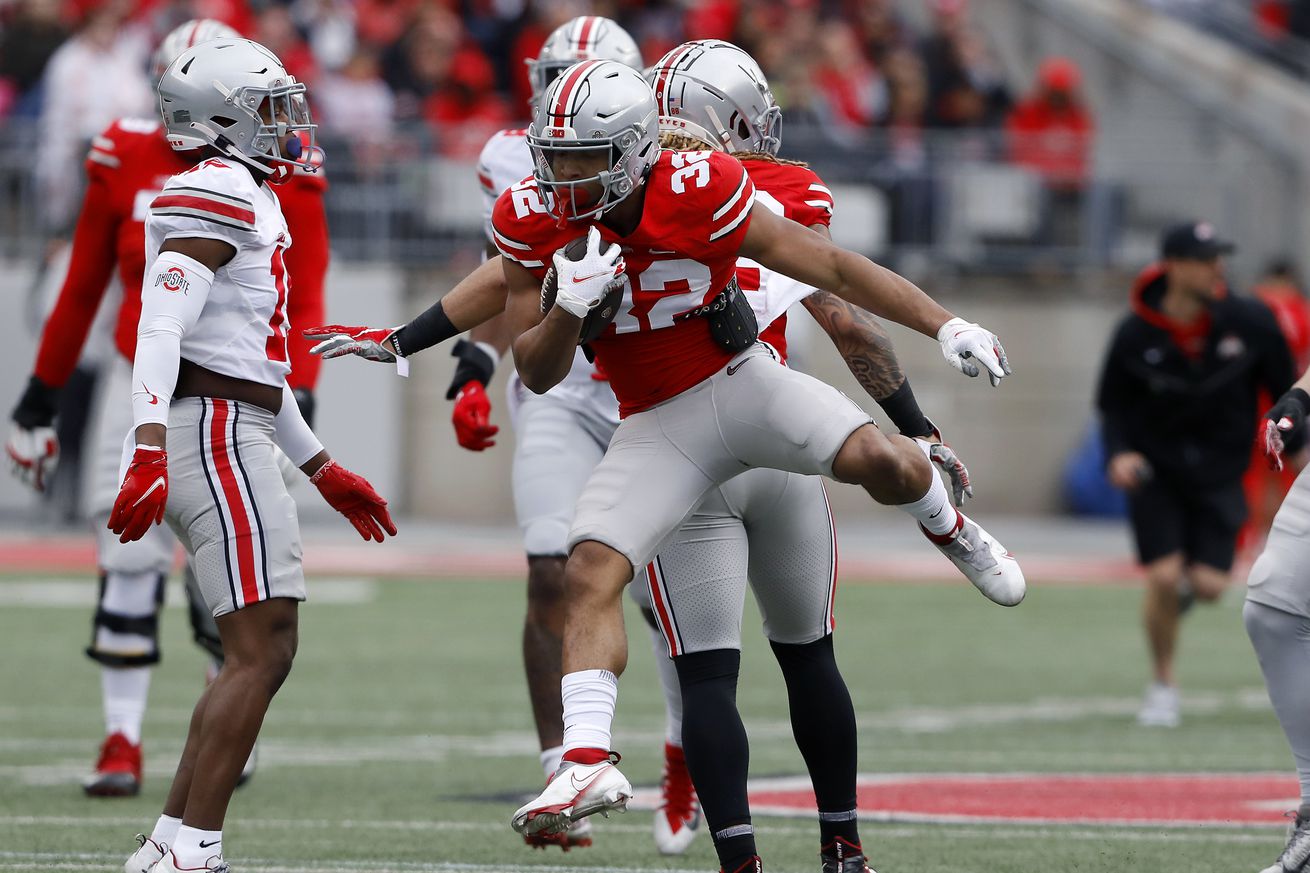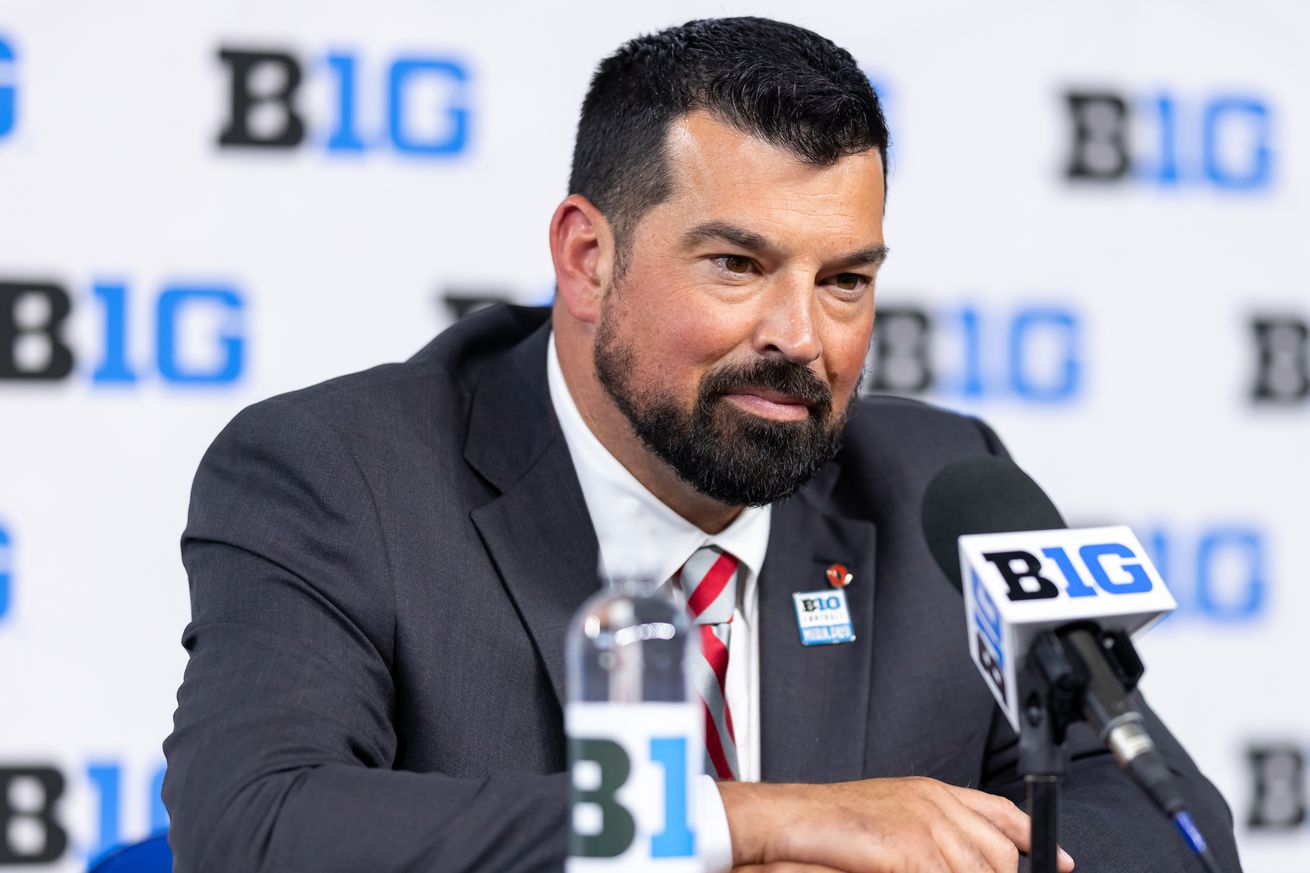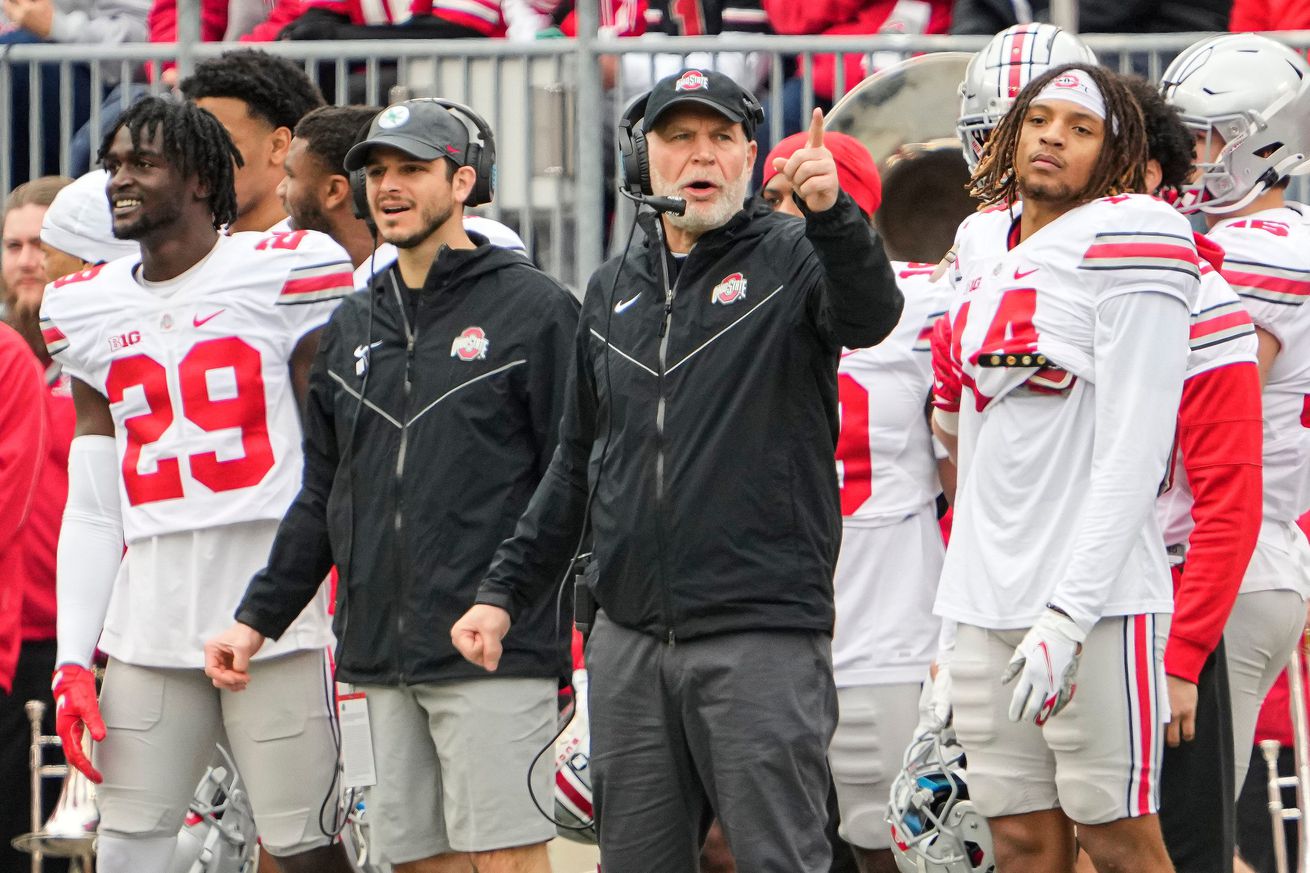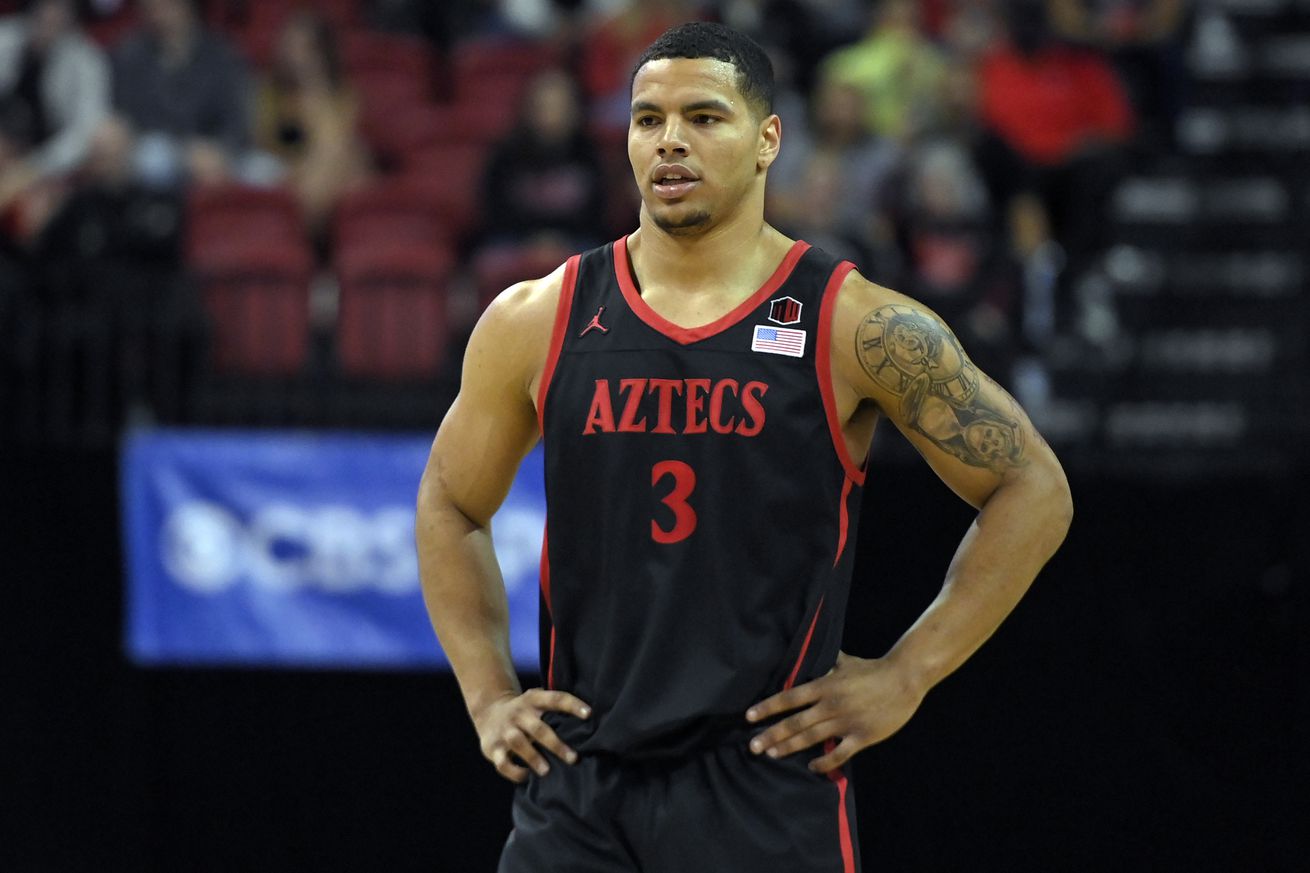LGHL Column: Kam Babb 100% deserves to receive the Block O jersey
- News
- 0 Replies
Column: Kam Babb 100% deserves to receive the Block O jersey
meganhusslein via our friends at Land-Grant Holy Land
Visit their fantastic blog and read the full article (and so much more) here

Doral Chenoweth / USA TODAY NETWORK
The fifth-year senior has had an unbelievably bad run with injuries, yet never wavered as one of the leaders on this team.
This past week, the Ohio State football team announced that Kamryn Babb would be the third recipient of the prestigious ‘Block O’ jersey. This selection made me extremely happy, as I believe there is truly no one more deserving of it than him.
Babb is pretty much the definition of perseverance. The fifth-year receiver has torn his ACL not once, not twice, not three times, but FOUR TIMES! The first one ended his senior high school season early. He tore it again his freshman and redshirt-freshman year of college, then a fourth time his redshirt junior year (last year).
The former four-star receiver is still looking for his first collegiate catch. However, the fact that he has only played seven games during his four years hasn’t prevented Babb from being a leader on this team, as this is the second year in a row his teammates voted him as a captain.
/cdn.vox-cdn.com/uploads/chorus_asset/file/23945449/1235728248.jpg) Photo by Rich Graessle/Icon Sportswire via Getty Images
Photo by Rich Graessle/Icon Sportswire via Getty Images
I feel like this speaks volumes to the type of person Babb is off the field. The fact that his team looks up to him that much and he hasn’t even played a full season yet just shows the amount of respect they have for him. I mean, it would be hard not to. He is showing up for a fifth season, still grinding and keeping a positive attitude after four serious knee injuries. It is extremely admirable.
Babb has previously said that he did think about quitting a couple of times. However, himself and his doctors have remained optimistic after each injury, which keeps him hopeful for a healthy season. Additionally, he credits his faith for allowing him to become a leader and remain a critical part of this team.
Perhaps his most public showing of his leadership took place during the Spring Game this past year. There was a moment of silence to observe the death of former Buckeye QB Dwayne Haskins, and Babb led the team, and basically the entire stadium, in prayer.
/cdn.vox-cdn.com/uploads/chorus_asset/file/23945446/usa_today_18099265.jpg) Adam Cairns/Columbus Dispatch / USA TODAY NETWORK
Adam Cairns/Columbus Dispatch / USA TODAY NETWORK
Clearly, the super senior has gained the respect of his teammates and coaches. He is definitely someone they can look up to in terms of staying positive and getting through the grind of being an Ohio State football player. If he can put 110% effort into everything he does and he’s torn his ACL four times, then certainly that can motivate his teammates to do their best as well.
Both C.J. Stroud and Jaxon Smith-Njigba commented on Babb at Big Ten Media Day, supporting the fact that he is a mentor on the team and they seek advice from him. They both were confident in the role that Babb could play this year, with JSN saying, “His ceiling’s really high.”
If the top two offensive players on the team are hyping up Babb, you know he’s done his job well. Now, he did suffer a minor meniscus injury in the spring, but he does appear to be fully healthy at the moment. Let’s all pray that he stays that way for the entirety of the season so that he can show off his highly-touted skills that have been four years in the making. Oh, and we are all going to go absolutely berzerk when he makes his first career reception, right?
Continue reading...
meganhusslein via our friends at Land-Grant Holy Land
Visit their fantastic blog and read the full article (and so much more) here

Doral Chenoweth / USA TODAY NETWORK
The fifth-year senior has had an unbelievably bad run with injuries, yet never wavered as one of the leaders on this team.
This past week, the Ohio State football team announced that Kamryn Babb would be the third recipient of the prestigious ‘Block O’ jersey. This selection made me extremely happy, as I believe there is truly no one more deserving of it than him.
Babb is pretty much the definition of perseverance. The fifth-year receiver has torn his ACL not once, not twice, not three times, but FOUR TIMES! The first one ended his senior high school season early. He tore it again his freshman and redshirt-freshman year of college, then a fourth time his redshirt junior year (last year).
The former four-star receiver is still looking for his first collegiate catch. However, the fact that he has only played seven games during his four years hasn’t prevented Babb from being a leader on this team, as this is the second year in a row his teammates voted him as a captain.
/cdn.vox-cdn.com/uploads/chorus_asset/file/23945449/1235728248.jpg)
I feel like this speaks volumes to the type of person Babb is off the field. The fact that his team looks up to him that much and he hasn’t even played a full season yet just shows the amount of respect they have for him. I mean, it would be hard not to. He is showing up for a fifth season, still grinding and keeping a positive attitude after four serious knee injuries. It is extremely admirable.
Babb has previously said that he did think about quitting a couple of times. However, himself and his doctors have remained optimistic after each injury, which keeps him hopeful for a healthy season. Additionally, he credits his faith for allowing him to become a leader and remain a critical part of this team.
Perhaps his most public showing of his leadership took place during the Spring Game this past year. There was a moment of silence to observe the death of former Buckeye QB Dwayne Haskins, and Babb led the team, and basically the entire stadium, in prayer.
/cdn.vox-cdn.com/uploads/chorus_asset/file/23945446/usa_today_18099265.jpg)
Clearly, the super senior has gained the respect of his teammates and coaches. He is definitely someone they can look up to in terms of staying positive and getting through the grind of being an Ohio State football player. If he can put 110% effort into everything he does and he’s torn his ACL four times, then certainly that can motivate his teammates to do their best as well.
Both C.J. Stroud and Jaxon Smith-Njigba commented on Babb at Big Ten Media Day, supporting the fact that he is a mentor on the team and they seek advice from him. They both were confident in the role that Babb could play this year, with JSN saying, “His ceiling’s really high.”
If the top two offensive players on the team are hyping up Babb, you know he’s done his job well. Now, he did suffer a minor meniscus injury in the spring, but he does appear to be fully healthy at the moment. Let’s all pray that he stays that way for the entirety of the season so that he can show off his highly-touted skills that have been four years in the making. Oh, and we are all going to go absolutely berzerk when he makes his first career reception, right?
Continue reading...




/cdn.vox-cdn.com/uploads/chorus_asset/file/23945336/170994454.jpg)






/cdn.vox-cdn.com/uploads/chorus_asset/file/23929266/OhioState_1_8422.png)
/cdn.vox-cdn.com/uploads/chorus_asset/file/23929267/OhioState_2_8422.png)



/cdn.vox-cdn.com/uploads/chorus_asset/file/23927502/1134508854.jpg)
/cdn.vox-cdn.com/uploads/chorus_asset/file/23927528/1180492114.jpg)




